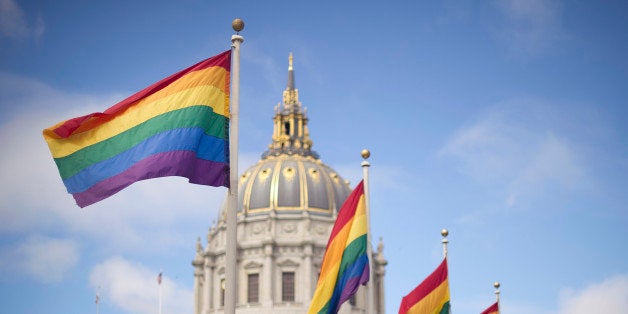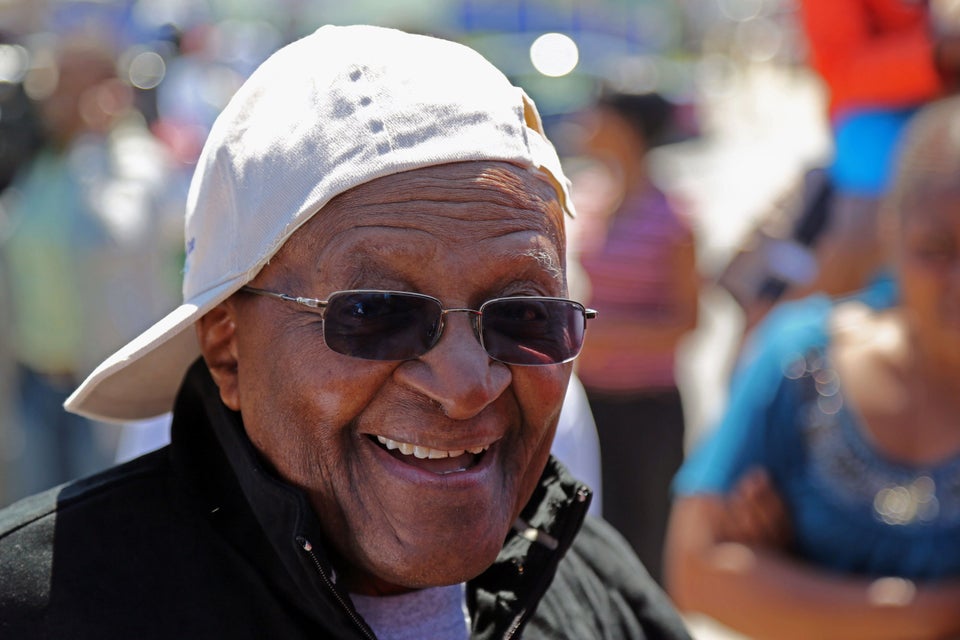
Members of the transgender and queer communities and their allies take to the streets in San Francisco Friday for the annual Trans March. Among them will be members of the Bay Area’s vibrant pagan community, who in many ways are setting the tone for how religious institutions can best serve their trans congregants.
Reclaiming and CAYA (Come As You Are) Coven, two pagan groups with deep roots in the area, have been at the forefront of LGBT acceptance within the larger American pagan community. Members and leaders of both groups shared insights with The Huffington Post about how other pagan and non-pagan religious communities can better welcome trans and gender-fluid individuals.
Root, a student teacher and organizer in Reclaiming and a CAYA aspirant, is one such member. Root, like others interviewed for this story, uses a spiritual name, and began identifying as gender-fluid after a “moment of inspiration” at a Reclaiming WitchCamp, a yearly gathering for rituals and workshops.
“I don’t feel like this development could have happened for me if it wasn’t for the spiritual communities I’m involved in,” Root explained. “Paganism gives me the space to figure out what works for me and use it.”
Many pagan denominations are oral traditions, noted Dominique Leslie, who goes by Flame. That allows them to evolve without being bound by a central text. This flexibility is essential as the world becomes more LGBT-literate and trans individuals feel safer coming out to their communities.
“In 1990, when I came out, it wasn’t like that,” said Flame, who counts herself among some of the first trans pagans to publicly come out. Reclaiming "was a very open and welcoming community for me, but there were questions.”
To answer some of the questions that might come up regarding the trans community, Flame penned an essay in Reclaiming Quarterly, a publication distributed in Reclaiming circles. She described her experience as a trans woman who started identifying as female as a teenager, and lived an androgynous lifestyle for 15 years. She completed her full transition in 1991 and has been living fully as a woman since.
Her essay, published just before her transition was completed, served as “transgender 101,” she said, and helped start further conversations in Reclaiming.
“As more and more people talk about it, I think that's how acceptance is gained,” Flame said.
Conversation around trans issues in the pagan community came to head at the 2011 PantheaCon, an annual gathering in San Jose, California. According to Flame and others who were there, a group of trans women were turned away from a CAYA-hosted women’s ritual, though the coven stressed that the organizers had no part of any altercation.
The clash revealed a split between traditional feminists and a new generation of LGBT feminists within the pagan community. Z Budapest, founder of the first women-only coven in the U.S., reportedly supported the exclusion of trans women from women’s rituals. Other pagan feminists, like Root, felt that “if someone self identifies as a woman ... they should be welcomed into a women’s space.”
Flame said she hasn’t returned to PantheaCon since 2011, but the controversy had a silver lining.
“That incident caused a tidal wave of more education and more interest in transgender issues in the pagan community,” Flame said.
CAYA affirms that it was never the group's intention to turn anyone away. But the controversy inspired the coven to take specific measures to ensure that trans individuals feel welcome.
“Since 2011, we have taken a path of educating ourselves about sensitivity specifically to the trans* and genderqueer experiences,” said the coven’s high priestess, Lady Yeshe Rabbit.
“We have worked to create safe spaces for trans* and genderqueer people,” she said, by “creating a specifically genderqueer Full Moon circle, the Rainbow Moon. In this circle, gender, identity, and self are held as sacred in all of their multi-layered expressions, while our self-identified single-gender (but not specifically cis-gender) circles continue to hold sacred space for those who feel greatest alignment with a particular binary gender.”
Reclaiming also took steps toward greater inclusivity by changing its Principles of Unity in 2012 “to reflect that all genders and gender histories are welcome,” said Sayre, who has been involved with Reclaiming for more than a decade.
“It was a four-year process of sending the questions out to community and bringing it back to revise the current document, which I thought was really amazing -- to see a tradition actually walk the walk of not becoming a calcified institution,” Sayre said.
Everyone interviewed for this article expressed the view that in order to truly welcome trans and genderqueer people, religious groups need to be willing to evolve. That might mean using gender-neutral pronouns in services, avoiding gender-limiting language and even finding a gender-neutral term for leadership roles within the faith, Sayre suggested.
They also said groups should consider how gender norms affect not only trans individuals, but anyone who may feel non-traditional.
“At some rituals, people get naked,” Sayre explained, as an example. “I notice that when that happens, a lot of times people who are queerly gendered don’t, and it applies to people who have non-traditional bodies, too.”
Initiating conversations around gender identity and privilege will “open a door” to greater education, acceptance and inclusivity, Sayre said.
As San Franciscans march for trans acceptance on Friday and cities around the world participate in LGBT Pride activities, religious groups have an opportunity to welcome the trans community. Yeshe offered some advice CAYA learned from its experience after PantheaCon:
“Stop talking and listen. Just listen first, for a very long time. You don't need to know how to get everything perfect right away. You do not need to clamor to prove that you are an ally. Work on sensitivity instead. Just be open, and welcoming, and hospitable, and listen. The trans community will gladly articulate their needs and ideas to you, and it will benefit you to listen carefully.”

